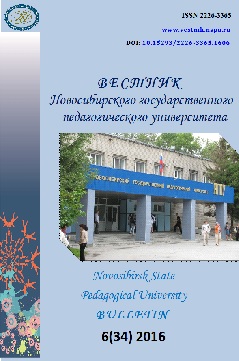Обращение и теория барьеров
Vocatives and the barriers theory
Author(s): Mikhail Yakovlevich DymarskiySubject(s): Cognitive linguistics, Philology
Published by: Новосибирский государственный педагогический университет
Keywords: Clause; utterance; word order; Barrier Theory; vocative phrase; Old Russian
Summary/Abstract: The paper proves inadequacy of incorporating elements of the so called communicative escort, i.e. vocatives, parenthesis and interjections, into the scope of Barriers within the Barriers Theory introduced by A. Zaliznyak. It is shown that in this theory the notion of clause is used in its broadest sense. The clause is defined as a grammatical structure (“a group, including non-predicative groups, headed by verb”), but at the same time it is treated as a result of lineariza-tion of this structure. The borders of this linearized structure are identified not only grammati-cally (according to the definition) but also taking semantics into account. This forces the inves-tigator to regard elements of the communicative escort as components of the linearized struc-ture. But it means, in turn, that this linearized structure is no more a clause but an utterance which contradicts the clause definition. At the same time, the linear structure of an utterance may not be interpreted simply as equal to the clause linearized structure, since it arises as a re-sult of imposing two structures: the linearized basic grammatical (clause) structure + the com-municative structure, the latter including linear-accent transformations as well as positions for the elements of the communicative escort. These positions may occur at any place of the linear utterance structure but they do not impact the positioning of the components of the grammatical structure. Therefore, interpreting elements of the communicative escort as one of the objects of the Barriers Theory is pleonastic. It is shown by means of reanalysis of some examples from the Old Russian language which have already been analysed by A. Zaliznyak and A. Zimmerling.
Journal: Вестник Новосибирского государственного педагогического университета
- Issue Year: 6/2016
- Issue No: 6
- Page Range: 150-163
- Page Count: 14
- Language: Russian

